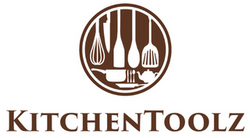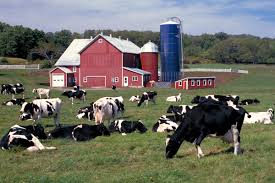Owning Your Own Dairy Farm: A Dream Turned Reality
For many, the idea of owning a dairy farm is a dream come true. The sight of happy cows grazing in lush pastures and the satisfaction of providing wholesome milk to the community make it a rewarding venture. However, setting up and running a dairy business requires careful planning, dedication, and a deep love for agriculture.
Tips for Storing Milk: Ensuring Freshness and Quality
Maintaining the freshness and quality of milk is paramount for any dairy farmer. After all, the delicious taste and health benefits are what keep customers coming back for more. Here are some essential tips for proper milk storage:
- Temperature Control: Milk should be stored at a consistent temperature of around 4°C (40°F) to prevent spoilage and bacterial growth.
- Clean and Sterile Containers: Use sanitized stainless steel or food-grade plastic containers for milk storage to ensure it remains uncontaminated.
- Quick Cooling: Rapidly cool freshly milked milk using a cooling tank or ice bath to preserve its taste and quality.
- Regular Rotation: Follow a "first-in, first-out" approach to ensure that the oldest milk is used first, maintaining freshness.
Pasteurization: Striking the Right Balance
Pasteurization is a crucial step in ensuring milk safety by eliminating harmful pathogens while preserving its natural goodness. There are two common methods of pasteurization:
- High-Temperature Short Time (HTST): Involves heating milk to around 72°C (162°F) for 15 seconds, followed by rapid cooling. This method retains most of the milk's nutritional value while ensuring safety.
- Low-Temperature Long Time (LTLT): Requires heating milk to 63°C (145°F) for 30 minutes and then cooling it slowly. This process provides a slightly different flavor profile.
As a dairy farmer, you can choose the method that best suits your farm's needs, ensuring your milk is safe and delicious.
Bottling: Reviving the Magic of Glass
When it comes to bottling your milk, choosing glass milk bottles adds an extra layer of nostalgia and environmental consciousness. Embrace the charm of old-fashioned glass milk bottles, and consider implementing a refill system. Invite customers to return their empty bottles in exchange for fresh milk, reducing waste and fostering a sustainable practice that customers will appreciate.
Marketing Your Milk Locally: Connecting with the Community
Now that your dairy farm is up and running, it's time to connect with your local community and build a loyal customer base. Here are some marketing tips to get your farm noticed:
- Farm Visits: Open your doors to the public and offer farm tours, allowing people to see where their milk comes from and the care you put into your operation.
- Farmers' Markets: Participate in farmers' markets to introduce your dairy products to a wider audience and build personal connections with customers.
- Community Events: Engage with local events and sponsorships to show your support for the community and raise awareness about your farm.
- Social Media: Utilize social media platforms to showcase your farm's story, values, and product offerings, connecting with a broader audience.
Profitizing and Producing Quality Dairy Products
To ensure profitability, diversify your dairy products while maintaining a strong focus on quality. Alongside fresh milk, consider producing other dairy delights like butter, cheese, yogurt, and ice cream. Each product offers a unique opportunity to showcase the exceptional taste and freshness of your farm's milk.
Invest in quality equipment, adhere to strict hygiene standards, and prioritize the health and welfare of your cows. Remember, producing high-quality dairy products is key to creating a brand that customers trust and adore.
Owning a dairy farm and embracing the charm of old-fashioned glass milk bottles is a journey filled with nostalgia, sustainability, and community connections. From proper milk storage and pasteurization to bottling and marketing, each step contributes to a thriving dairy business that touches the lives of many.
So, let's raise a glass – a glass milk bottle – to the cherished dairy farms, where tradition meets progress, and the love for the land creates wholesome, quality dairy products. Here's to preserving the past, savoring the present, and nurturing a future rooted in the joy of a humble glass of milk. Cheers to the dairy farmers who bring us this timeless delight, one bottle at a time!

